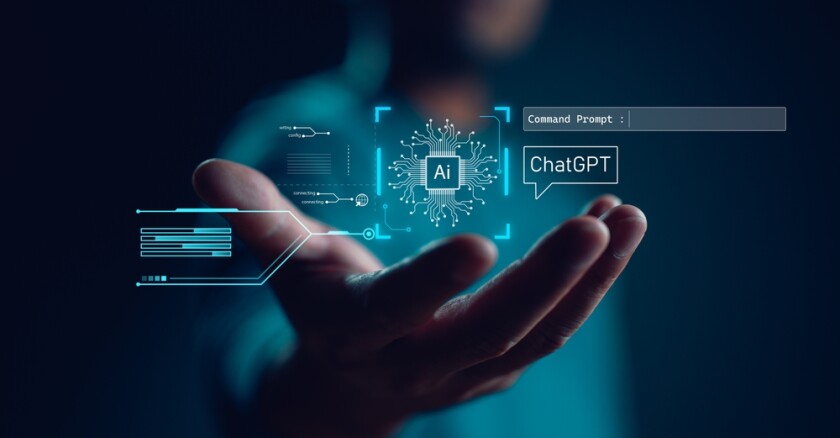In 2025, generative AI (GenAI) is poised to take center stage, offering opportunities to find alternative solutions to new and existing problems, improve public services and disaster response, address cybersecurity challenges, and boost infrastructure projects.
PIONEERING GenAI FOR PUBLIC GOOD
GenAI will bring creativity and exploration of the art of the possible to government.
It has the ability to assess structured and unstructured data from countless sources and develop more creative and thoughtful solutions. As GenAI advances, state and local government agencies will begin to build internal AI assistants for their own employees. These AI assistants will use publicly available data, internal data and regulatory guidelines applied to what-if scenarios to explore all possible outcomes.
Imagine a virtual sandbox where governments can test drive infrastructure changes — adding lanes, tweaking traffic lights, building bike paths — and model the best options for improving communities before breaking ground. This is GenAI at work, helping prepare for unintended consequences and assessing impact.
Government agencies made AI chatbots essential tools to communicate and answer questions for citizens in 2024. In 2025, the government workforce will put AI agents to work for citizens to go beyond just answering questions. An AI agent will work on behalf of the citizens to help them complete paperwork, find and apply for services, and stay up to date on what their government is doing for them. Likewise, AI agents will assist state and local workforces to process claims, identify fraud and work more efficiently.
FROM DISPARATE TO UNIFIED SYSTEMS
One of the most significant trends to watch in 2025 for government will be the emerging need of an AI management layer to unify agencies’ disparate AI applications and tools. If left unchecked, these disparate tools and applications will evolve in their own silos, detached from other sources of data and knowledge, rendering them less useful with time.
As organizations grapple with this growing number of AI solutions from different vendors, the need for a unified, centralized platform to manage and leverage these tools will become increasingly important. It’s not enough to adopt AI, it's critical that IT organizations work to unify the efforts. This will require a level of investment from public-sector organizations to build an enterprise layer of AI to serve as a central brain, enabling organizations to standardize their applications, data, regulations and rules for better mission outcomes.
CYBERSECURITY TURNS TO AI TO DEFEND AGAINST NEW THREATS
The cybersecurity landscape will continue to get more complex. AI, in the hands of bad actors, is crafting sophisticated malware, ransomware and phishing attacks, exploiting vulnerabilities faster than defenders can patch them. Over the course of the past year, we identified the capacity for malicious actors to use GenAI models to identify zero-day vulnerabilities, which show gaps in a system where bugs can gain access.
To thwart these attacks from both domestic and foreign actors, government organizations will need to leverage AI in their cyber defenses for improved threat detection, response and mitigation. Organizations will lean into AI-enabled security solutions to look for the same zero-day vulnerabilities, identifying and patching them before the attackers find them. We’ll also see organizations deploy protocols that identify an attack and collapse on it in real time, so as to reduce its impact.
Small towns and schools could be more vulnerable to AI-powered cyber attacks where a lack of resources could make this more challenging. Regional and state-level cooperation will be crucial in defending smaller entities.
BEHIND THE SCENES IN EDUCATION
While we saw a lot of student-facing AI in 2024, this year we’ll see AI applied to internal data to help institutions optimize campus operations, while improving student enrollment, engagement and retention. For educational institutions, 2025 will be the year of optimizing business operations with AI. Universities are incredibly data rich, and 2025 will be the year that AI can unlock the true value of that data. From researchers having AI agents to assist them in their discoveries, to educational leaders being able to discern optimal learning paths for every student, the possibilities are endless.
In 2025 AI will revolutionize government and education. This isn't just about upgrading outdated systems; it's about reimagining how services are delivered. From streamlining processes, to fighting cyber threats, AI is poised to transform the public sector. In 2025, we’ll continue to see public-sector organizations work hard to improve efficiencies and services, and strike a balance between embracing AI innovation and ensuring responsible, secure deployment to drive significant improvements across the public sector.
Chris Hein is director of customer engineering for Google Public Sector where he leads a team responsible for architecting technical solutions to solve customer challenges. Hein is also a member of the Executive AI Principles Fellowship at Google focused on ensuring ethical use of AI both internally and externally.








